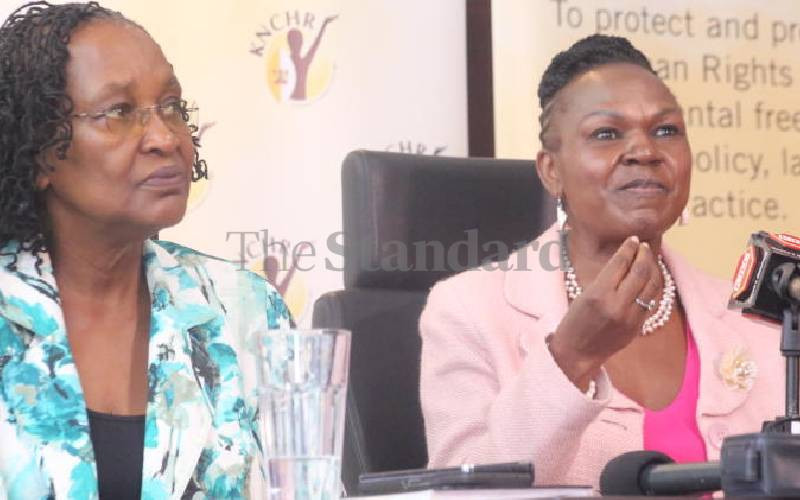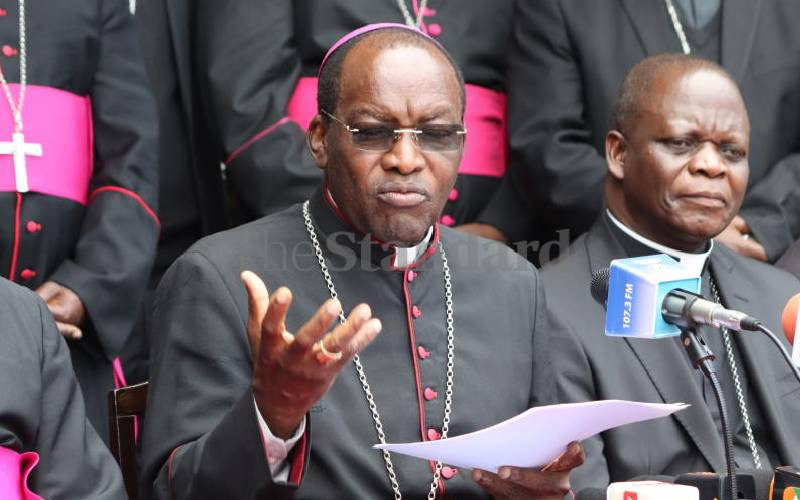Consider this. In 2016 alone, one billion children around the world experienced physical, sexual or psychological violence. And globally, 240 million children live in countries affected by conflict.
Thirty years ago, the world united in support of childhood. People around the world hoped for better lives and more rights for their children. When world leaders came together in 1989 to adopt the UN Convention on the Rights of the Child (CRC), there was a real sense of hope for the next generation. In 1990, Kenya became one of the first African countries to ratify the CRC.
How much progress have we made? According to a new report released by Unicef this week, 'The Convention on the Rights of the Child at a Crossroads', progress includes a fall in the global under-five mortality rate by about 60 per cent over the last 30 years. The proportion of primary-school-aged children not in school across the world has also dropped from 18 per cent in 2000 to 8 per cent in 2018. These are substantial achievements that we can be proud of.
However, progress has not been fast enough. In low and middle-income countries, children from the poorest households are twice as likely to die from preventable causes before their fifth birthday than children from the richer households. On education, the improvement in access has not been matched by quality. Around 1.3 million additional teachers will be needed by 2030 in Africa, just to maintain the current pupil-teacher ratio.
Great advances
There have also been great advances in child rights in Kenya. Children now benefit from free health services, universal free primary education and free day secondary education, better nutrition and improved child protection services. However, children born in different counties have very different chances of survival and access to services. And children across the country continue to face a high risk of violence.
According to the most recent published data, the Government-led 2010 Violence Against Children study, an estimated 79 per cent of boys and 76 per cent of girls experienced at least one form of physical, sexual or emotional violence before the age of 18. Ending violence against children requires long-term action, and this continues to be a significant issue in Kenya.
In this context, we are delighted to note that Kenya has begun the ratification process of the Optional Protocol to the CRC on the sale of children, child prostitution and child pornography. This is an important tool to help protect some of the most vulnerable children in society from some of the worst abuses, including new and emerging threats.
Child pornography
Take a moment to think about what one of these offences – child pornography – feels like for a child. This could be a 10-year old Kenyan girl who doesn’t fully understand what is happening to her, but is deeply disturbed by the things that are done to her by predators or the things she is forced to do. This is already a grave violation of her rights, but it doesn’t stop there.
In the future, as a young adult, she is unable to escape from her past due to abuse images circulating on the Internet. She gets the images taken down from one website and then they appear on another. She is targeted again and again by these predators who have no scruples. The images keep coming back to haunt her and she struggles to trust people or form meaningful relationships. Her life has been damaged, possibly beyond repair.
How do we tackle these threats? The Optional Protocol includes important provisions for how countries can work together to investigate and prevent these crimes. At the national level, the forthcoming Children’s Bill is another important instrument to protect children in Kenya. Once enacted, this will ensure stronger protection of children from all forms of abuse and violence.
Hence, as we mark the 30th anniversary of the CRC in Kenya, and rightly celebrate the gains that have been made, Unicef and the United Nations at large urge the completion of the ratification process of the Optional Protocol, speedy enactment of the Children’s Bill, and a renewed focus on ensuring the full range of child rights in Kenya.
This is a critical point in time for the CRC, which stands between its past successes and its future promise. It underpins Kenya’s potential to reap a demographic dividend. Children are organising themselves, raising issues impacting their lives, communities and the future. And they are putting solutions on the table. It’s time for the rest of us to listen to children and act boldly in support of their rights.
As Nelson Mandela said: “There can be no keener revelation of a society’s soul than the way in which it treats its children”.
Stay informed. Subscribe to our newsletter
Ms Zaman is Unicef Kenya Representative. Mr Chatterjee is UN Resident Coordinator
 The Standard Group Plc is a
multi-media organization with investments in media platforms spanning newspaper
print operations, television, radio broadcasting, digital and online services. The
Standard Group is recognized as a leading multi-media house in Kenya with a key
influence in matters of national and international interest.
The Standard Group Plc is a
multi-media organization with investments in media platforms spanning newspaper
print operations, television, radio broadcasting, digital and online services. The
Standard Group is recognized as a leading multi-media house in Kenya with a key
influence in matters of national and international interest.
 The Standard Group Plc is a
multi-media organization with investments in media platforms spanning newspaper
print operations, television, radio broadcasting, digital and online services. The
Standard Group is recognized as a leading multi-media house in Kenya with a key
influence in matters of national and international interest.
The Standard Group Plc is a
multi-media organization with investments in media platforms spanning newspaper
print operations, television, radio broadcasting, digital and online services. The
Standard Group is recognized as a leading multi-media house in Kenya with a key
influence in matters of national and international interest.








